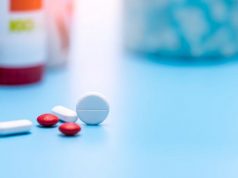Pharmacists involved in antibiotic surveillance, formulation of policies related to antibiotic use
MONDAY, April 9, 2018 (HealthDay News) — Pharmacists have been involved in the recent progress made toward reducing hospital-acquired infections (HAIs), according to an article published in Drug Topics.
According to the latest data from the U.S. Centers for Disease Control and Prevention, between 2008 and 2016 there was a 50 percent decrease in central line-associated bloodstream infections as well as other common HAIs.
Collaborative efforts among health care providers have helped with progress toward reducing HAIs. Providers include pharmacists, who have integrated their services and expertise into patient care teams; health system pharmacy forms part of the multidisciplinary teams that reduce infection. Pharmacists are increasingly becoming involved in antibiotic surveillance, formulation of policies relating to use of antibiotics, and control of problematic antibiotic use. Technology, such as electronic surveillance, is helping to accomplish these tasks. According to the American Society of Health-System Pharmacists, pharmacists’ responsibilities include promoting optimal use of antimicrobials; reducing the transmission of infections; and the education of health professionals, patients, and the public.
“Pharmacists can use electronic surveillance to track changes in culture results and ensure appropriate targeted therapy, downgrade the delivery from intravenous to oral therapy, and make other interventions that will help reduce the risk of C. diff or multi-drug-resistant infections,” Jeanette J. Harris, from MultiCare Health System in Tacoma, Wash., said in the article.
Copyright © 2018 HealthDay. All rights reserved.








